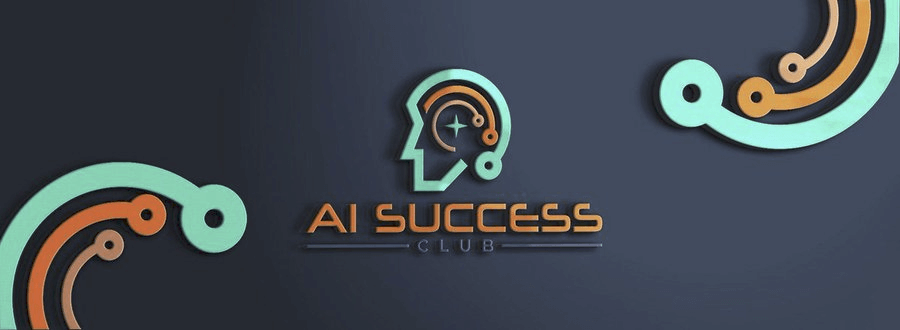 I Want You to Consider AI… Here’s Why
I Want You to Consider AI… Here’s Why
Today I am going to ask you to have an open mind. My goal is not to talk you into doing something; instead, I’m simply asking you to have an open mind about something that has changed the world completely and will continue to take us into a future that is already beginning to feel more like science fiction than the world any of us grew up with, no matter where we live in the world. Here is why I want you to consider AI – Artificial Intelligence as a gentle way to move you closer to the future that awaits all of us.
Do You Remember Life Before Computers and Technology?
I came of age in the 1960s and into the 70s, so a world without computers and technology was normal for me. When I was in my Freshman year of college, I was required to purchase an HP-80 calculator. It cost almost $200 and no one I knew at that time was excited to have to spend that much money for something we believed we might never use outside of the classroom that year.
This was HP’s second handheld calculator, designed for business rather than scientific/engineering. In addition to having different functions, it was designed with a different philosophy. Whereas the previous hand-held calculator, the HP-35, was designed for technical/mathematical users, the HP-80 was designed to be a problem solver that didn’t require its users to know the formulas needed. These days my calculator is an app on my smart phone, and this feature alone reminds us of how far we have come over these past decades
I Want You to Consider Using AI as Technology in Your Business
It’s exhausting trying to keep up with everything people say you should be doing in business right now. Everywhere you look, someone’s telling you artificial intelligence (AI) is the future, AI will change the game, and AI is the key to your success.
Maybe it is. But when you’re on the outside of it, watching the AI wave rush past, it just feels like one more thing you’re behind on. The tools all sound the same. The experts all act like you’re supposed to already know how to use them.
And instead of getting excited, you feel anxious that you’re falling behind or that you’ll screw something up by doing it wrong. You’re not lazy or resistant. You’re smart enough to know that AI probably could make your life easier.
You’re just trying to run a business, wear a dozen hats, and not spend hours every day deciphering tech speak. You’ve got a full plate already, and hearing “you need to be using AI” sounds a lot like “here’s another confusing thing you better figure out fast, or else.”
That kind of pressure doesn’t help. It makes you freeze. And then you do what most people do when something feels overwhelming—you put it off. At the same time, you feel that nudge in your gut.
The curiosity. The part of you that knows ignoring AI completely probably isn’t the best idea. You don’t want to be the person who missed the boat because they were too intimidated to get on. But you also don’t want to be the person who jumped in without understanding anything and wasted time using tools the wrong way, copying bad advice, or getting poor results and blaming yourself.
You want a way in that doesn’t make you feel like an outsider. You want clear language, plain talk, and no pressure to master it all overnight. You want to explore without fear of breaking something. And, you want to feel empowered!
You want to try it out without feeling like you’re being judged for asking the “wrong” questions. Most of all, you want to understand how this can fit into your real-world business without replacing your voice, confusing your customers, or becoming a full-time job you didn’t ask for. You want help without being made to feel helpless. And that’s a good place to begin.
What AI Means in Simple Terms
A lot of people think AI is stealing content. That it scrapes blog posts or YouTube videos and spits them back out as if it just copied and pasted someone else’s work. That’s not how it works.
AI doesn’t grab a paragraph from someone’s site and toss it into your project. Instead, it was trained on large chunks of data from all over the internet, books, articles, forums, and other sources.
Think of it like a sponge that soaked up tons of information during training. It learned patterns, structure, tone, common ways people write or talk about different topics. Now, when you give it a prompt, it uses that training to generate something new based on everything it has “learned.”
It’s not pulling from one blog post. It’s drawing from a million pieces of writing to come up with something original in response to what you asked. Imagine a chef who’s read every cookbook, watched every cooking show, and studied thousands of recipes.
When you ask for a new dish, the chef doesn’t go copy someone else’s recipe word for word. They create something from what they know, based on their training and experience.
That’s what AI does. It doesn’t “remember” exactly where the information came from. It recognizes patterns and builds something fresh. You still need to fact-check it sometimes because, just like a chef can mess up a recipe, AI can mess up an answer.
But it’s not designed to steal. It’s designed to generate. Now let’s talk about what artificial intelligence actually is. You’ll hear a lot of jargon thrown around, but here’s the simplest way to think about it: AI is a digital assistant that knows how to write, think, draw, speak, organize, and solve problems—based on everything it’s learned from humans.
It doesn’t feel emotions, and it doesn’t make decisions the way people do. It follows patterns. It reads your input and responds the way a very advanced assistant would. It can help you brainstorm.
It can help you write a blog post. It can take your audio and turn it into text. It can look at a messy to-do list and give you a clean plan. It can generate a picture from nothing but a sentence. It can even help you script a YouTube video and then create a voiceover for it.
There are many types of AI tools. Some are focused on writing, like ChatGPT. Others are designed for art and images. Some create videos or voiceovers. Others help with organization and planning.
Some are good at one thing. Others combine multiple skills in one tool. You don’t need to use them all. You just need to find the ones that solve your biggest headaches or make something faster or easier than doing it by hand.
What throws people off is that AI can sound too good. It writes in full sentences. It comes up with ideas quickly. It doesn’t stop to get distracted or second guess itself. So people assume it must be cheating somehow.
But it’s not magic. It’s just fast. It’s like having a team of skilled workers behind the scenes who do what you ask immediately. You still have to guide it. If you give it bad instructions, you’ll get bad results. If you’re clear and specific, the results can be incredible.
One thing that’s worth clearing up is how AI is not like those old article spinner tools. If you’ve been online for a while, you probably remember those. You’d paste in an article, and it would run through a thesaurus and swap out a bunch of words.
Suddenly “get” would become “acquire” and “start” would become “commence.” The end result sounded robotic, awkward, and often didn’t even make sense. The goal back then was to trick search engines by making duplicate content look “new.” It wasn’t really writing. It was word swapping.
AI doesn’t do that. It doesn’t take your input and just replace words. It rewrites based on meaning, not vocabulary lists. It’s more like asking someone, “Can you explain this to me in your own words?”
And then they do. It may use some familiar phrasing because language is full of common patterns. But it’s not scrambling a sentence and hoping it still works. It’s building something from scratch based on everything it knows about that subject, that format, and that tone.
The biggest difference is that article spinners were meant to fool people. AI is meant to help people. With spinners, you hoped no one would notice what you did. With AI, the goal is to get something clear, helpful, and well-written—without wasting hours on a blank page.
You’re not hiding the fact you used a tool. You’re using the tool to save time and energy while still putting your ideas into the world. You still have a role in this. AI doesn’t run your business.
It’s not meant to replace you. I want you to consider AI because it’s a shortcut to get past the boring or hard parts so you can spend more time on what really matters. The better you get at working with it, the more powerful it becomes.
But it’s always a tool, not a replacement. You’re still the one with the vision. You’re still the voice behind the brand. AI just helps you get that voice out faster and with less friction.
AI can analyze a topic and suggest relevant keywords. It can recommend titles, meta descriptions, and even blog structures that are more likely to perform well. It’s not a magic solution, but it makes the process a lot easier to understand and execute.
Even if you know nothing about SEO, you can get started without having to memorize a bunch of rules or pay for expensive software. Running a business also means staying organized and keeping your head above water when your to-do list keeps growing.
AI can help here too. It can summarize long documents or articles you don’t have time to read. It can turn a messy brain dump into a neat list of tasks. It can help you break down a big goal into steps.
If you ever worry that AI will make your content boring or generic, remember that it only becomes bland when you copy and paste without editing. As long as you stay involved, your personality won’t disappear.
AI doesn’t take over. It just helps you write faster, stay consistent, and get unstuck when the words won’t come. Your readers follow you because of you—your stories, your energy, your honesty. As long as you’re reviewing, tweaking, and adding your final touch, AI won’t get in the way of that.
In fact, using AI well can actually help you be more yourself in your content, and this is yet another reason I want you to consider AI. It takes care of the busywork so you have more time to focus on what matters—sharing your ideas, building relationships, and growing your business. You don’t have to choose between being authentic and being efficient. You can have both, as long as you keep your hands on the wheel.
The key is to treat AI like a helpful assistant, not a ghostwriter. Use it to get the bones of your content in place, then go in and add the heart. The more you practice, the easier it becomes to shape AI output into something that sounds like it came directly from you. And once you get that rhythm down, you’ll wonder how you ever worked without it. Your voice stays front and center. AI just helps you get it out into the world a little faster.
Going from Beginning AI User to Pro – Why I Want You to Consider AI in a Bigger Way at Some Point
Once you get comfortable using AI, it’s easy to stop there. You figure out how to get it to write a blog post or help with an email, and you stick to what works. But if you want to go from a casual user to someone who really knows how to get the most out of these tools, there are a few steps you can take that will keep building your skills and confidence.
You don’t have to be a tech expert. You just need to practice regularly, stay curious, and treat AI like a teammate instead of something to depend on for every task. I want you to consider AI by doing the first thing that makes the biggest difference… daily practice. This is taking full responsibility to grow exponentially.
You don’t have to use AI all day, every day. But doing a little bit each day helps you stay sharp and learn what works best. Try to use it for one small thing in your business every day. Maybe that’s asking for a blog post outline.
You can even make it part of your morning routine or planning sessions. Start your workday by asking AI, “What’s one way I can connect with my audience today?” or “Give me a task to move my business forward this week.”
The more you treat AI like an ongoing partner, the more natural it feels to include it in your workflow. The benefit of daily practice is that you don’t have to relearn how to use the tool every time. It stays fresh in your mind, and you keep getting better without a huge time commitment.
Another easy way to improve over time is by following updates that matter. AI tools are growing and changing fast. New features are added, old limits are removed, and tools you use every day might suddenly have better ways to do something.
You don’t need to follow every new trend or test every shiny new tool. But it’s smart to keep up with the ones you use most often. If you’re using ChatGPT, follow the official OpenAI blog or check your account for feature updates. If you’re using tools like Canva or Notion, they often announce changes right inside the platform.
Even just checking once a month can help. Search “new ChatGPT features” or “AI tools for business 2025” and read a few articles or watch a short video. You’re not trying to become an expert in the technology.
You’re just staying aware of new ways to save time or do things more efficiently. Sometimes a tiny update—like letting you upload files or use memory—can make a huge difference in how useful the tool becomes. The better you understand what’s possible, the more creative you can get with how you use it.
The last and maybe most important step is learning how to make AI your assistant—not your crutch. It’s tempting to hand everything over and let AI do the work for you. And in the beginning, that’s totally fine.
But if you want to become a pro, you need to stay in charge. AI should support your ideas, not replace your thinking. You should still be the one setting the vision, and making the decisions. I want you to consider AI to review everything with a critical eye.
One way to do this is to always start with your own thoughts. Before asking AI to write something, take 30 seconds to think about what you want to say. Jot down a few notes or a quick outline. Then give that to the AI and ask it to help build on your ideas. That way, the content still comes from you. You’re using AI to enhance your work, not take it over.
Another way to stay in charge is to always edit what the AI gives you. Don’t copy and paste the first draft into your blog or email. Read it. Change it. Add your stories, your tone, your little comments.
Make sure it sounds like you. Even a few edits can turn a generic response into something powerful that feels personal. That’s what separates AI users from AI pros. The pros use the tools without losing their voice or their standards.
You can also keep a running list of what tasks work best with AI and which ones don’t. Over time, you’ll find that some things—like outlines, social media captions, and brainstorming—are a perfect match.
But other things—like writing heartfelt sales pages or personal stories—might still be better when you do most of the writing yourself. Knowing the difference helps you use your time wisely and keep the quality of your content high.
Becoming an advanced AI user doesn’t mean knowing every trick or tool. I want you to consider AI to know how to work with the tools in a way that supports your business, saves your time, and strengthens your voice.
Keep practicing. Keep paying attention. I want you to consider AI to stay curious. Be in the habit of testing things and improving what you create. You don’t have to master it all in a day. But by staying consistent, asking better questions, and staying in the driver’s seat, you’ll find that AI becomes one of the most useful tools in your business—not because it does everything for you, but because it helps you do everything better.
You don’t have to be technical to use AI. You don’t have to know fancy terms, write perfect prompts, or have everything figured out. These tools are built to be helpful, not confusing.
You can talk to them like you’d talk to a friend or assistant. If you don’t know how to do something, just ask. You can say, “How do I use you to write an email?” or “Can you walk me through creating a blog post step by step?” and it will explain everything in plain, simple language. Everything is possible when you embrace what I’m sharing with you here!
It doesn’t expect you to be an expert. It’s there to support you—whenever you’re ready, as often as you need. AI isn’t meant to replace you. It’s meant to work with you, make things easier, and help you grow your business without burning out.
NOTE: The ONLY training I am recommending on this topic of AI (Artificial Intelligence) for marketers, content creators, and others online is from people I know and trust. Denise Wakeman and Andy O’Bryan have created the AI Success Club and I am excited to be learning everything there is to know on this topic, as well as how to utilize it for my business from these two thought leaders.
Artificial Intelligence Can Be Beneficial to Many Online Entrepreneurs
You don’t need to be perfect. You just need to get started. Now you understand why I want you to consider AI. Everything else will come with time, and AI will be right there to guide you.
I’m bestselling USA Today and Wall Street Journal author Connie Ragen Green. My goal is to help at least a thousand people to reach six-figures and beyond with an online business for time freedom and passive income and to simplify your life. Come along with me, if you will and let us discover how we may further connect to achieve all of your dreams and goals. This is also why I want you to consider AI in your life and business. Perhaps my “Monthly Mentoring Program” is right for you.



Leave a Reply